
Полная версия
Street Knowledge
‘Our influences are, hash, music, weird people, growing up in a fucked-up militant country, hummus, skateboarding, porn, Haifa….’
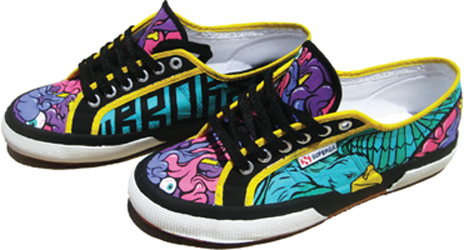
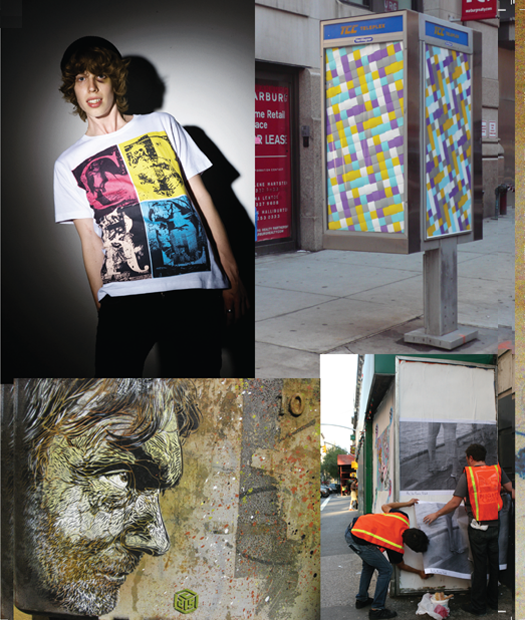
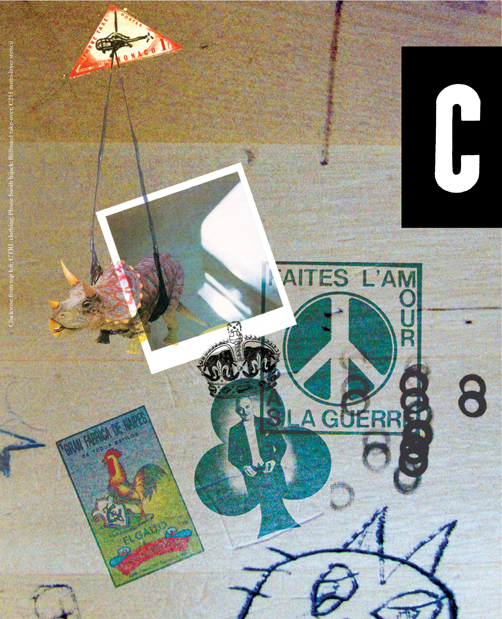

CENTRAL STATiON
www.centralstationdesign.com
One of the creative driving forces coming out of Manchester (>p172) is the creative collective Central Station, comprised of Matt and Pat Carroll and Karen Jackson. The visual yin to the Happy Mondays audio yang, Central Station provided all the art, including record sleeves, stage sets, music videos, to the movement. And their art is fucking amazing. When I had to swiftly make a business card in South Africa I was so inspired by their Black Grape ‘Carlos’ cover (see right) that I used the same police photo-fit image with the words ‘Graphical Terrorist’ scrawled underneath. I sat down with Matt, Pat, and Karen in Manchester on a sunny day in 2009.
‘We’ve been into making art since we were kids. There was eleven of us living in this tiny council house — it was chaos. Art became a way of entering our own world and space. We were influenced by all the shit that was around us, music, books, films, magazines and mad characters. A subliminal intake of the world, a subconscious collection of ideas. We were into things like drawing, type, and making marks — stuff that kids round our way were just not interested in.
‘Our front room was full of our brother’s massive record collection and we were fascinated by some of the sleeve art — it was amazing. We’d buy our own records and redesign the sleeves ourselves, or if we bought a single without a proper sleeve we’d make one. We’d spend hours copying images from Marvel comics. Drawing pictures and cartoons of pop stars and people off the telly.
‘Our Dad introduced us to magazines and books that we would never have looked at. It opened up a world that had a massive effect on us. Some of the visual images we discovered at that time — like when we read about the air disaster with the rugby team in the Andes in 1972-that fascinated us for 20 years. Reading about things like the Baader-Meinhof gang, terrorist movements, stuff like that had a big impact on us and influenced our work — eventually. Being a kid in the 70s and early 80s, you have to remember that it was a fucking grim time — but we always had dreams and aspirations beyond our means, we always thought outside of what you’re supposed to. One of the most important things when you get older is to connect back to all those key moments. People forget that… A lot of people become adults and they fucking erase everythin’ they think is no longer important. We’ve always believed that’s the stuff you keep. When we set up Central Station our priority was to celebrate this idea. Growing up with the Mondays meant we shared the same mentality-we didn’t give a shit.
‘Factory records became an outlet for us all to infiltrate a commercial environment. Our art, images like Bummed and Carlos the Jackal were exhibited in high-street shop windows, people’s homes, and posters were plastered around the country. We were part of an underground movement, using the establishment to communicate to a wider audience.’

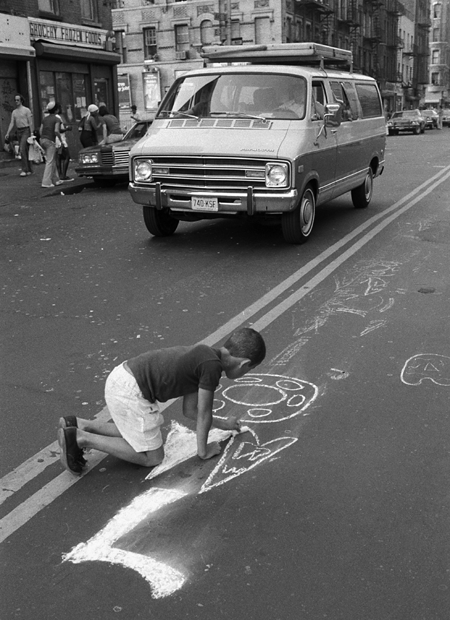
MARTHA COOPER
Martha Cooper is a living legend: one of the most influential documentary photographers of street culture and co-author of Subway Art-required reading for anyone into street culture. Martha has done all kinds of photography over the past 40 years in order to make a living. The bottom line is that she is an editorial photographer, meaning that she shoots photos for publication in newspapers, magazines, books and the web, so that people can find out about things.
‘I prefer to call myself a “documentary photographer” rather than a photojournalist because to me journalism implies news and I don’t like shooting news stories.’
I first met Martha in Berlin in 2007 when, one summer afternoon, her German publisher tried to get her to autograph 1500 copies of her latest book. I helped her out with the signing of 700 or so, by keeping her supplied with a stream of open books to write on, and we bonded over the absurdity of the situation. She returned the favour and shot an interview for me in the rubble of a hip hop museum that was being built nearby.
‘For me, the subject matter always overrides factors such as unusual light or dramatic angles. I really want to be able to see what’s going on in my photos. I feel the camera is an excellent tool for capturing the world and I’m more interested in historic preservation than I am in art. That being said, I would also like my photos to be aesthetically pleasing so the challenge is to present straightforward documentation well framed and well lit. I’ve pretty much shot the same way my entire life. Over the years I’ve been more specialized in my choice of subject matter but my basic way of taking pictures has remained the same.’
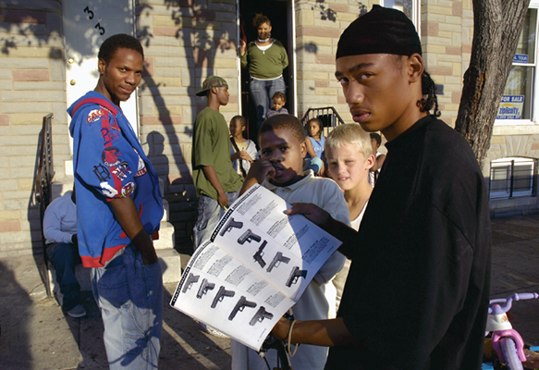
CTRL
www.ctrlclothing.com
Coming straight outta Helskini, Finland, CTRL began its journey as a skateboarding company back in 1994, but in the last five years it has moved smoothly into the fashion world. The roots are still in skateboarding and street culture, but now the main focus is clothing, for both men and women.
‘The biggest motivation for the gentle switch to the fashion world came from the fact that by owning a fashion label you get the most attention from the best looking girls, basically.’
And now they also get to decide what their friends should wear. All this leads to a lot of networking and travelling around the world; lots of tradeshows and secret drunken gatherings. CTRL is now sold in 33 countries around the world. But this is just the start! I hung out with Freeman, the designer/art director and asked him how his work has evolved.
‘Graphic design-wise my work has gotten more mellow. It started as a vivid, colourful and disturbed mega blast and slowly got easier and easier. I’m trying to put more effort behind the design, meaning that in the beginning I was satisfied with something that just looked cool to me; now it has to mean something as well, conceptual thinking is key, I guess. And in general my way of working has changed a lot more into being a clothing designer more than a graphic designer — my way of working of combining those two, though, but compared to early days it was mostly just working with deckgraphics or T-shirt graphics, but now I have whole clothing lines to think about, cut, sew and everything.’
I was curious to know how Freeman saw fashion/streetwear influencing the urban landscape.
‘Living in Helsinki, I can only say that the rise of fashion/streetwear brands has done a lot of good to the urban landscape, meaning that in general people dress better than before. It wasn’t such a big thing, you see in Helsinki dressing up isn’t obvious, especially if compared to our neighbouring country capital Stockholm, where dressing up and being aware of the latest trends has always been a huge thing. But on the other hand there the trend consciousness is on such a level that it almost looks like people are wearing uniforms, everybody looks the same. And I guess this is happening in many cities around the world. But in general it’s not really the streetwear brands that dictate the way fashion is going, but the skaters and everything that is around skateboarding, and therefore skate brands are always on top of the pyramid.’
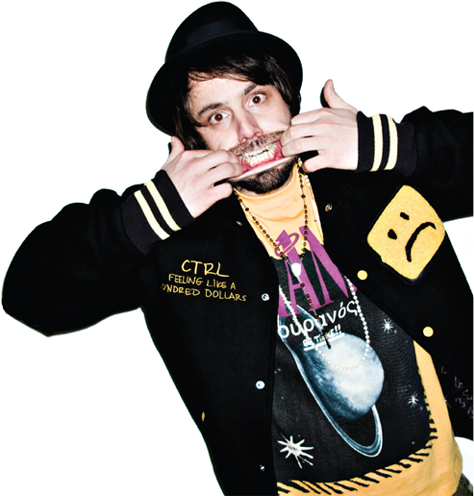

CULTURE JAMMiNG
www.publicadcampaign.com
www.areyougeneric.org
One of the most exciting and ingenious elements of street culture is culture jamming. Culture jamming is what people turn to when they have had enough of the more popular forms of mainstream culture — shopping, movies, the media, advertising. It is a healthy reaction to the propaganda and bullshit that is fed to us 24/7 through the media, and is manifested in street action (hijacking advertising or shop fronts), media action (using Internet and traditional media to raise awareness) and events I can’t even categorize (using a giant projector to beam out anti-consumer messages on to a building). It could be a protest about how big business rides over the lives of humans in the cause to make even more money, or the way that a lot of advertising billboards are actually illegal. On the road writing this book, I spent time with two serious culture-jammers, Okat from areyougeneneric.org and Jordan Seiler, who’s the mastermind behind the New York Street Advertising Takeover.
areyougeneric.org, the US-based website has been ‘Giving brand-America the finger since 2001’ and links the protest with creativity. Areyougeneric is a group of artists that seeks to protest, to question and to disprove. Its nemeses are unethical corporations, censorship, the biased media, hypocrisy, excessive advertising and plain stupidity. Its heroes are art, discussion, independent thought and creation.
‘At first the site was nothing more than a place for us to show off a culture jam or two (such as stickering the front of certain fashion magazines that are totally controlled by their advertisers) that we pulled off. It has now evolved to be much more than that. It’s become a resource library of street-art photos from all over the world. It also houses our catalogue of clothing and print art intended to critique and reclaim our social and mental environments.
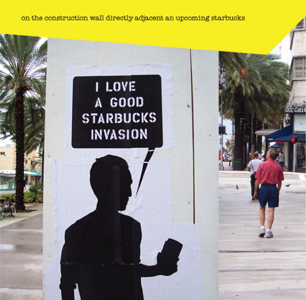
‘Our shirts promote a concept, not a name (not even our own), and are intended to provide an alternative to big business and small thinking. The shirts have no label, no logo, and are printed on sweatshop-free tees. We’ve also shared all our culture jams in the public domain and are constantly supporting and encouraging others to pursue their concepts in the public arena.’
As I helped Okat sticker up a shop that was being converted into yet another Starbucks, I asked him to define street culture.
‘In the most simple terms, I define street culture with the word “raw”. The street is where everything is born, where it lies before the mainstream gets its hands on it and refines it to something tolerable. Street culture embraces the unfinished, the pure, the work that was improvised without the intention of ever getting noticed and that is why it so beautiful’

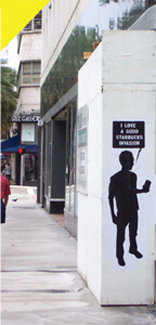
The first of Jordan Seiler’s seriously ambitious New York Street Advertising Takeovers (NYSAT) took place on 27 April 2009, when over 120 illegal billboards throughout the city of New York were white washed by dozens of volunteers and then turned into works of art. NYSAT was a reaction to the hundreds of illegal billboards that are not registered with the city. Even though these adverts are illegal, the violators are rarely, if ever, prosecuted by the City of New York, allowing the billboard companies to make some serious money by cluttering the outdoor space of NYC with some seriously shit adverts. Jordan tells me what it’s all about.
‘Outdoor advertising is the primary obstacle to open public communication. By commodifying public space, outdoor advertising has monopolized the surfaces that shape our shared environment. Private property laws protect the communications made by outdoor advertising while systematically preventing public use of that space. In an effort to illuminate these issues, I illegally reclaim outdoor advertising space for public ideas and visual forms. Through bold acts of civil disobedience I hope to air my grievances in the court of public opinion and witness our communities regain control of the spaces they occupy.’
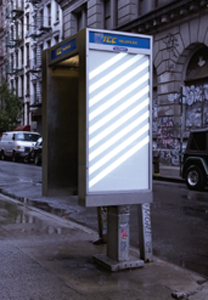
How has your work evolved?
‘Today I try to make work that not only uses outdoor advertising space but also announces itself as doing so. This means if I am making personal work, I use tactics that allowmy work to stand out from inside the advertising frame. Things like giving physicality where one expects two-dimensional prints, being quiet when someone would expect images to be loud, breaking the frame, and always trying to create honest personal interactions that are so rare in commercial messages. As well the work has embraced a sense of activism and the organization of events has become a part of my art.’

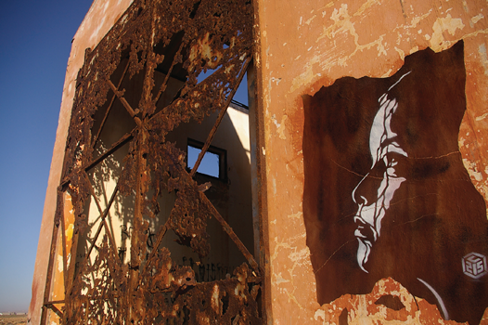
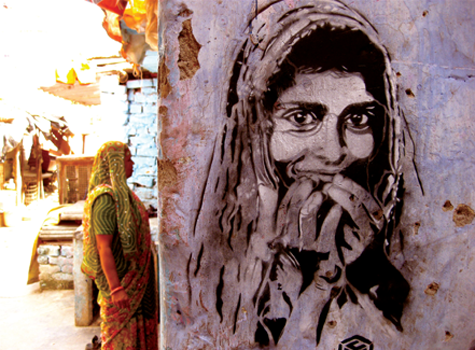
C215
C215 grew up in the small city of Orléans in France, a very quiet place where he began creating his street art as a teenager.
‘It was a balanced life I could not face, since I am a very unbalanced person who needs action. This city was too small. Paris is now too small. I sometimes feel this world is too small.’
His art has developed into some of the most amazing stencils around and can be seen in many cities around the world: Delhi, Sao Paulo, Istanbul, Brooklyn, LA, Dakar, Casablanca, London, Amsterdam, Rome, Barcelona, Athens, Warsaw, Berlin. ‘I think my art is painting stencils in the streets. I could do other things, but what I am good at is stencilling the streets. I’m used to painting anywhere I am and I am travelling quite a lot. I try to place paintings in the streets, but almost without asking for any authorization. Trying to place the right stuff, at the right place, at the right moment.’
What does street culture mean to you?
‘A lot of things, and not only hip hop culture. As a Frenchman, we think to the firemen dancing parties of the 20s, the Parisian terraces, the political posters, having fun between kids in parks, putting tags by night in the streets, being rebuked from night clubs, smoking a cigarette outside a club, smoking a joint in a small street. But more seriously I also think to homeless people, street kids and beggars, since those experience streets continually, with its violence, its indifference. These suffer from streets and cannot be avoided.’
What/who are your influences?
‘Ernest Pignon-Ernest, the original pioneer of French street art, is certainly at the basis of most of my works. But older classics are big references for me: Dürer, Rubens, Delacroix, Ingres, Géricault, Courbet and many others, I am even influenced by French poets like Baudelaire, Apollinaire and Rimbaud.’
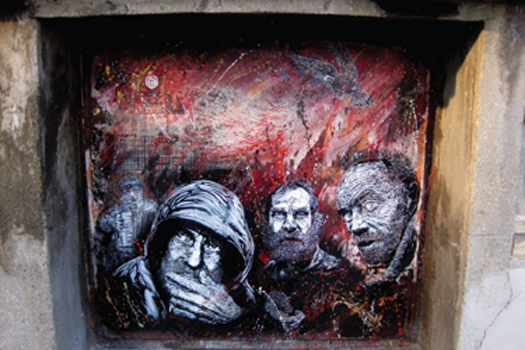
THE CiTY LOVES YOU
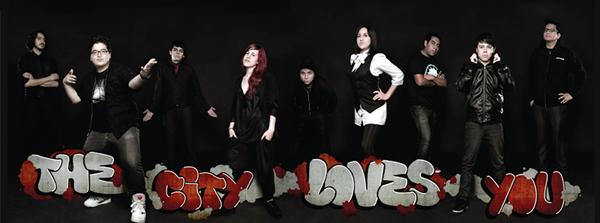
www.thecitylovesyou.com
The City Loves You is a Mexican art and culture crew who get their messages about urban art, fashion, movies and events out there, through a web-based magazine. Operating out of Mexico City since 2006, TCLY was primarily created as a platform where artists from Mexico could show their work to the world, and ever since they have been invited to collaborate with a lot of different companies and represent a lot of artists in Mexico City. They also create events and parties based on the themes they usually talk about on their website and they are the best reference point for anyone who wants to find out what’s really happening in the lives of Mexican youth, from the street to art to nightlife to leisure life and beyond. I caught up with Cesar Ortega, founder and director of The City Loves You.
‘We started TCLY as an urban artists’ and fashion designers’ community, the idea first was to give an account to all the emerging artists so they could show their work on a website. Obviously they were never able to update the blog so I started inviting friends who were fans of the scene and were interested in having this as a hobby, and since this was a good idea it grew a lot in the world and it started to be a job for everyone because it was considered as a one of a kind piece on the internet’
‘I grew up in a barrio in the north of Mexico City called La Industrial, well known for being a half wild barrio and also because it’s a very inspiring hood. Actually there are a lot of famous creators who also were raised there. Then I moved to another place which was more like a wealthy place full of Spanish people and Nuevos Ricos. I didn’t quite like it but I started skateboarding there, and there was the place where the local skate shop called Time Skateshop made a park for us where I basically used to spend all the time skating with neighbors and friends from around.’
‘The street is the perfect medium for us to communicate in different and simple ways, like the clothes you wear, the music you represent with it or the sport you practice, or any other way to express peacefully and impact the others to continue the process of freedom and love between each other on the planet. We have a lot of musical influences, we’re really eclectic: we go from punk to hip hop and many genres more, it doesn’t matter, but we’ve been also influenced a lot by all the people who started growing the scene in Mexico, the people who believed in the underground culture in all of its different forms.’
I love it: street culture Mexican style. This is what the culture is all about, taking something global and giving it a local twist! Big up The City Loves You!!
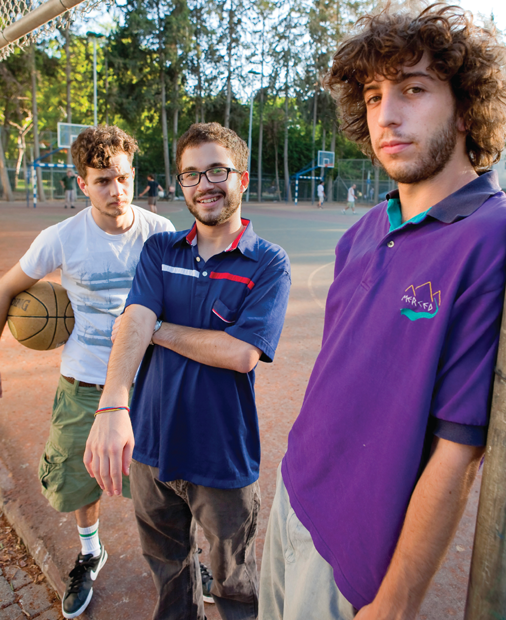
COHEN@MUSHON
www.myspace.com/cohenetmushon
First off, let’s get this straight: Cohen@Mushon are three guys — two MCs and one DJ. The trio, Michael Cohen, Michael Moshonov and Itai Drai, are some of the most humble and likable guys I’ve ever met and when we spend some time together I discover the boys have an infectious sense of joy about them, a rare thing indeed in the rap game. They are like the Beastie Boys used to be when they were young and restless. Cohen@Mushon are from Tel Aviv. They rap in Hebrew and use old-school Israeli music samples mixed with the fattest beats. This may sound like something that won’t cross-over, but I can assure you that their music has a global appeal. A serious global appeal.
‘First of all everything started as a joke. We met when we were sixteen-years-old and we started to do this routine every Friday and record a song — it was like our hangout — it grew and grew and when Itai (our DJ) came to the event we really became a band. We stated having like bigger and better shows and we started connecting to the scene. We used to have shows for our high-school friends but after we hooked up with Itai we got more serious and then at one of those shows we met Ori Shochat who is like the fourth member of the group. He’s a pioneering hip hop producer/DJ in Israel. He saw us and we started working on our album at his studio. That’s when we got serious, we kinda picked the material and we said, okay, we’re making a real album. Ori gave us a home to do everything and record for free and he really believed in the project and we were off on the journey.’
So Cohen makes the beats, then Cohen and Mushon write the lyrics together, and then Itai, AKA Walter, digs in his crates and finds some vintage Israeli sample to scratch in. The song that put them on the map contained a sample from an old-school Israeli track from the 70s, to which Walter added something from an Israeli cartoon to bring out the humour. What is also interesting is that even though they rap in Hebrew, the music works overseas as the message is universal.
‘We rap only in Hebrew because we feel that hip hop is all about your own language and talking on a personal level so that the only way to say something truthful is in your mother tongue. So it was only natural for us to sing in Hebrew even though most of the stuff we listen to is in English, but we wanted to make it our own. How it happened was very simple. Michael did the beats on Fruityloops (easy-to-use music software — and by the way we still work on it!) and he used to send me beats and I said to him, “You should be the MC also,” and he said, “No, you should be the MC and I will be the producer.” I said, “No, you have great things to say!” and so we started writing together. Our first concept for a song was “I have lost my physical fitness”. It was about us being unable to run or do anything sports related. It was very important for us to put some humour in our music, because when we started out, Israeli hip hop really took itself seriously, and was very political, very heavy headed. We needed to add some of that humour we had from our heroes — Tribe Called Quest, De La Soul, The Beastie Boys — to bring back an element of fun to it. But that’s not to say that we don’t take it seriously. We don’t do it as a joke. We take our fun seriously.’
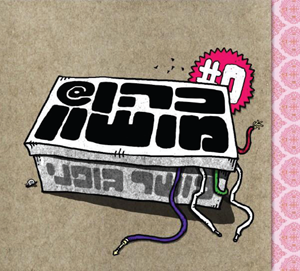

JAMES DODD
www.james-dodd.com
Jimmy and I met by chance when we were both guest speakers at some insane street art fest in Belgium (>p82). It was a strange but interesting weekend and it was one of those meetings where it feels like you’ve known the person forever, which is what friendship is all about: eternity. Jimmy used to be one of the most prominent stencil artists in Australia until he gave it all up to go back to uni and study for his Masters of Visual Art. This was an astute move as now his work has all the influences of the street but with the heavy-weight conceptual backing of the art establishment.
What Jimmy does is travel the world collecting scrawls and graffiti (not the street art kind, but the underclass style — people writing band’s names, expletives, insults, gangs etc). He shoots them on a digital camera, and then comes up with a concept to incorporate the image — like the time he built a facsimile of a Darwin bus shelter (which are renowned for being painted with very kitsch sunsets) and used exact copies of the collected scrawls to cover its surfaces. Thus underclass outsider art (ie art created by members of the underclasses out of frustration) becomes high art. I fucking love it.


